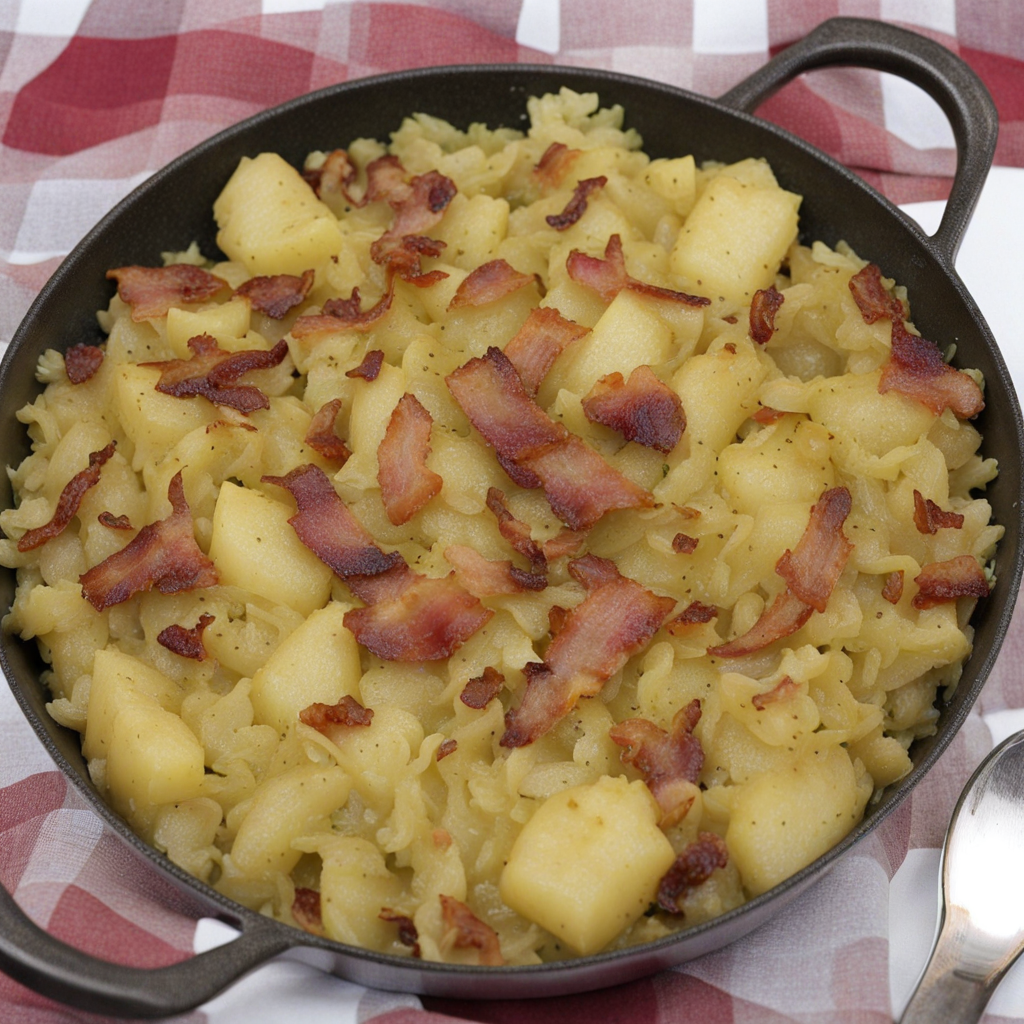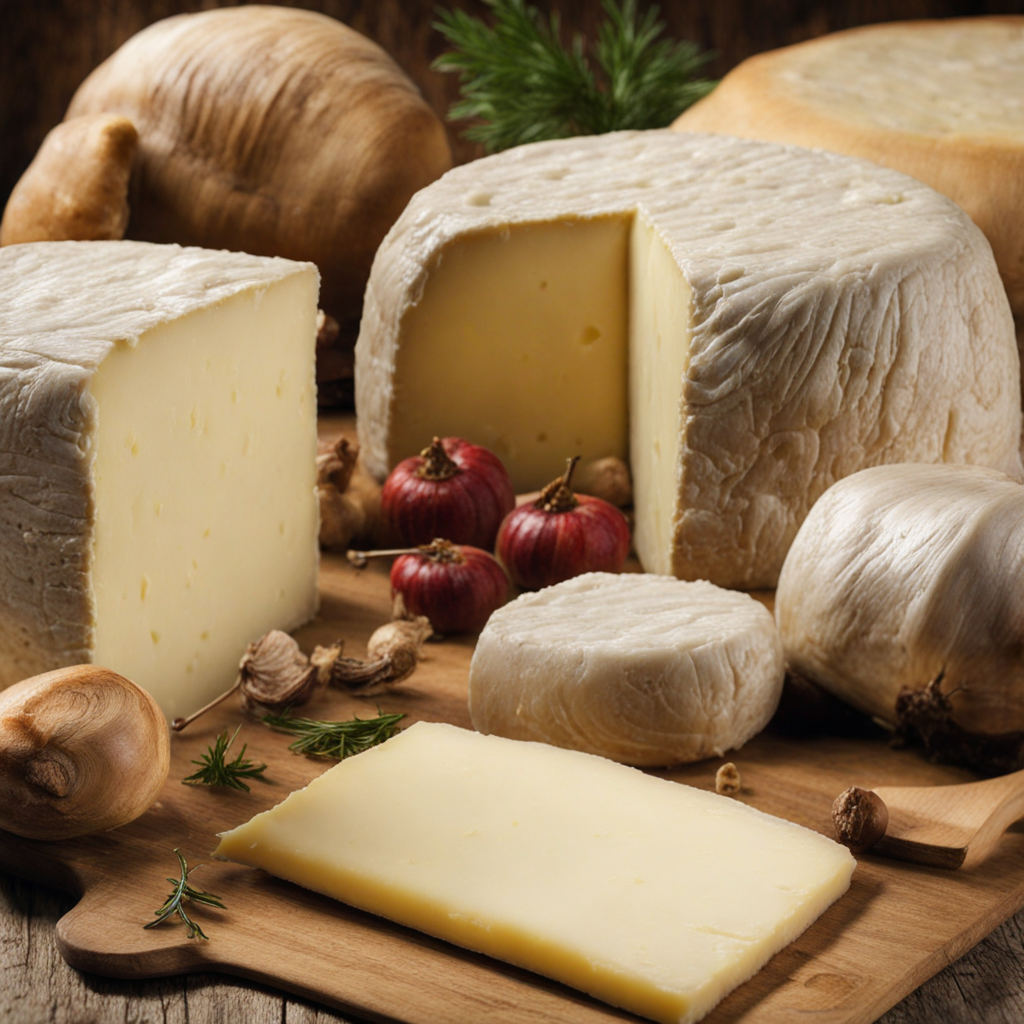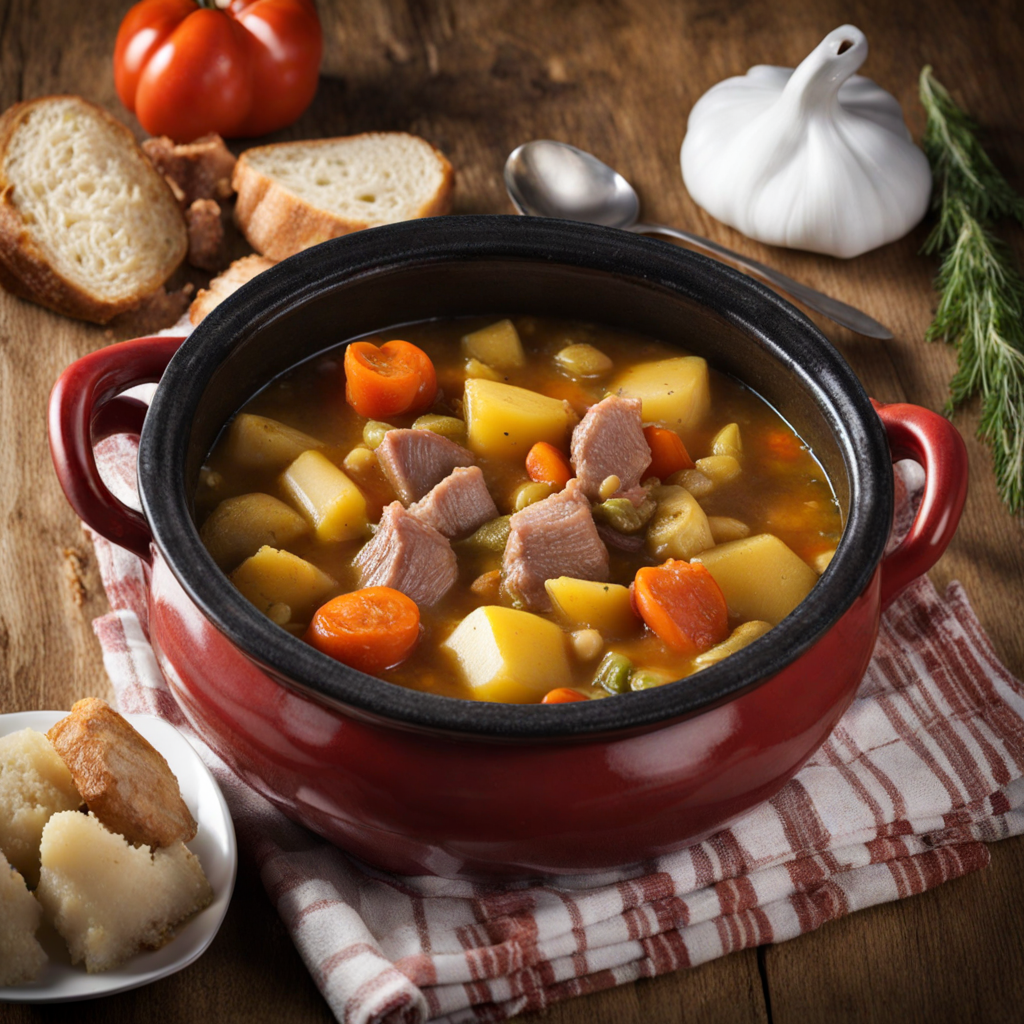Trinxat
Trinxat is a traditional dish from Andorra that beautifully showcases the rustic flavors of the Pyrenees. At its core, Trinxat is a comforting blend of potatoes, cabbage, and pork, all cooked together to create a hearty and satisfying meal. The dish is typically prepared by boiling potatoes and cabbage until tender, then mashing them together with crispy bits of pork or bacon, which adds a smoky richness to the mix. The result is a creamy, yet slightly chunky texture that is both filling and flavorful, making it the perfect dish for colder weather. The preparation of Trinxat often involves frying the mixture in a skillet until it develops a crispy crust on the outside, while remaining soft and tender on the inside. This technique not only enhances the flavors but also adds a delightful contrast in texture that elevates the dish. Once cooked, Trinxat is usually served in hearty portions, often topped with a drizzle of olive oil or accompanied by a dollop of homemade aioli, which introduces a creamy, garlicky element that perfectly complements the savory ingredients. What makes Trinxat particularly appealing is its versatility; it can be enjoyed as a main dish or as a side, making it suitable for various dining occasions. The dish embodies the essence of Andorran cuisine, reflecting the simple yet robust flavors that are characteristic of this mountainous region. With every bite, one can experience the warmth of home-cooked meals and the rich culinary traditions of Andorra, making Trinxat a must-try for anyone looking to explore new tastes and textures in their culinary journey.
How It Became This Dish
Trinxat: A Culinary Journey Through Andorra's History Trinxat, a hearty dish that has become emblematic of Andorran cuisine, is a savory mélange of potatoes, cabbage, and pork, often prepared as a comforting, rustic meal. The name "trinxat" itself derives from the Catalan verb "trinxar," which means "to chop" or "to shred," aptly reflecting the dish's preparation method. With its roots deeply embedded in the mountainous terrain of the Pyrenees, Trinxat is not merely a dish; it is a vibrant representation of Andorra's cultural heritage, agricultural practices, and the resilience of its people. #### Origins and Historical Context The origins of Trinxat can be traced back to the rural communities of the Pyrenees, particularly in the regions surrounding Andorra, which is nestled between France and Spain. The dish is believed to have been developed as a practical solution for the harsh winters experienced in this mountainous region. Historically, the inhabitants relied on local ingredients that could withstand the cold climate and be stored for extended periods. Cabbage and potatoes, staples in the Andorran diet, were readily available and could be preserved through fermentation or kept in root cellars. Pork, particularly in the form of cured meats like bacon or sausages, often accompanied these vegetables. This combination provided not only sustenance but also the necessary calories to sustain energy levels during physically demanding activities, such as farming or herding. The simplicity of Trinxat belies its rich flavors and the complexities of its history, which is intertwined with the agricultural practices of the region and the self-sufficiency that characterized Andorran life. #### Cultural Significance Trinxat is more than just a meal; it is a symbol of Andorran identity and tradition. In Andorra, food is an integral part of cultural expression, and Trinxat embodies the values of community and resourcefulness. Traditionally, the dish would be prepared in large quantities, often during communal gatherings or family celebrations, reflecting the importance of sharing and togetherness in Andorran society. The preparation of Trinxat involves a communal aspect that resonates with Andorran customs. Families would often gather to cook together, turning the preparation of food into a social event, fostering connections among generations. The act of chopping the vegetables and mixing them with meat would often be accompanied by stories, songs, and laughter, reinforcing the bonds of kinship and community. Over the years, Trinxat has become a staple in local restaurants and is celebrated during Andorran festivals. It is often featured in menus that showcase traditional dishes, serving as a reminder of the country’s rich agricultural heritage and culinary traditions. The dish has also gained popularity beyond Andorra’s borders, appealing to those who appreciate hearty, rustic fare. #### Evolution Over Time As Andorra has evolved, so too has Trinxat. In the late 20th century, as globalization began to influence culinary practices worldwide, traditional dishes like Trinxat faced the challenge of modernization. While the core ingredients remained the same, chefs began experimenting with flavors and presentations to cater to a more diversified palette. Contemporary interpretations of Trinxat might include variations that introduce additional ingredients such as garlic, onions, or even local cheeses, enhancing the dish's complexity. Some chefs have opted for creative plating styles and gourmet techniques, transforming Trinxat into a dish that can be served in upscale dining establishments while still honoring its rustic roots. Additionally, the rise of the farm-to-table movement has led to a renewed interest in traditional, locally sourced ingredients. Chefs and home cooks alike are increasingly focusing on sustainability and the importance of using seasonal produce, which aligns perfectly with the original ethos of Trinxat. This revival ensures that the dish not only remains relevant but also continues to honor the traditions that have shaped it. #### Modern-Day Trinxat Today, Trinxat is enjoyed in various forms throughout Andorra and beyond. The traditional recipe often includes boiled potatoes, blanched cabbage, and sautéed pork, all finely chopped and pan-fried until golden brown. The dish can be served with a drizzle of olive oil or accompanied by a dollop of local aioli, which adds a delightful creaminess and enhances the overall flavor profile. In Andorra, Trinxat is often enjoyed during the colder months, serving as a warming comfort food after a day spent skiing or hiking in the surrounding mountains. Its hearty nature makes it ideal for refueling after physical exertion, a nod to the active lifestyles of Andorran residents and visitors alike. Moreover, it is frequently featured during local festivals, highlighting its status as a cultural icon and a source of national pride. As Andorra continues to embrace its cultural heritage while navigating the modern world, Trinxat remains a cherished dish that encapsulates the spirit of the nation. It serves as a culinary bridge between past and present, reminding both locals and tourists of the importance of tradition, community, and the simple pleasures of good food. Conclusion In conclusion, Trinxat is much more than a dish; it is a narrative of Andorra’s history, culture, and resilience. From its humble beginnings as a sustenance meal for rural communities to its status as a celebrated culinary icon, Trinxat reflects the evolution of Andorran society. As the dish continues to adapt to contemporary tastes while retaining its traditional roots, it remains a vital part of the country’s culinary landscape, inviting all who partake in it to savor not just the flavors but the stories that have shaped Andorra's distinctive gastronomic identity. Whether enjoyed in a cozy mountain lodge or a trendy urban eatery, Trinxat invites diners to connect with the rich tapestry of Andorran culture through the universal language of food.
You may like
Discover local flavors from Andorra







